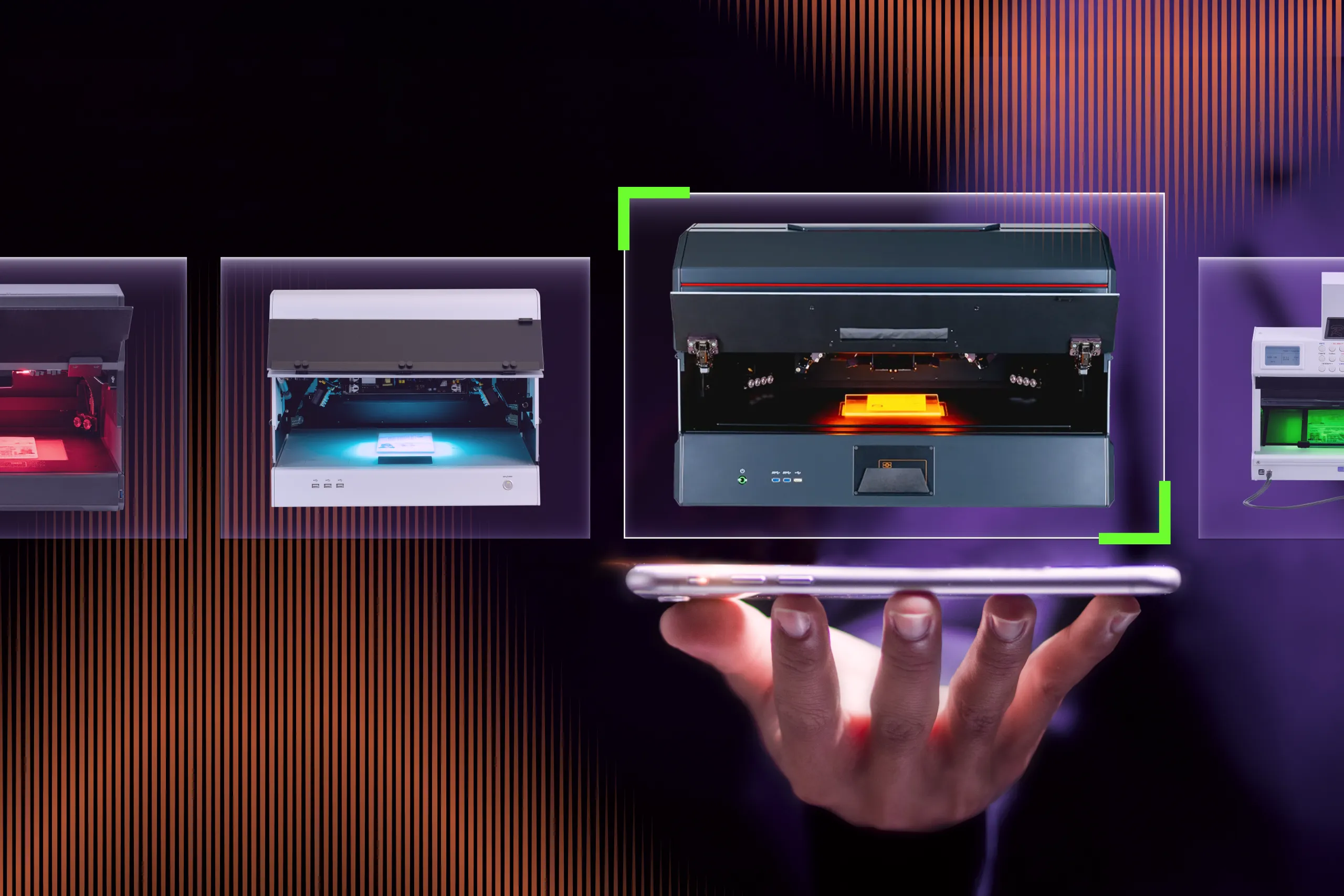The thought of someone stealing your identity is unsettling to most people. And we're not talking about someone mimicking your behavior, preferences, or speech patterns.
In the world of identity verification (IDV), it can take just one thing: swapping the real photo on an ID document. With that simple substitution, access to someone’s personal data, bank accounts, or digital identity can fall into the wrong hands.
This kind of fraud poses a serious risk—not just to individuals, but to entire businesses, especially in industries where verifying someone’s identity is critical before granting access to money, assets, and other sensitive information.
The threat also extends to national security: think illegal border crossings, sanctions evasion, impersonation for restricted access, or bypassing court orders. All it takes is a convincing fake ID—with a different face.
In this article, we will dive into old-fashioned and current methods of securing ID photos, as well as some real-world examples of photo substitution, and how to reveal those forgeries.
How ID photos were secured back in the day
In the early days, ID documents were entirely paper-based, and the holder’s photo was physically attached to the page, most commonly by gluing it on.
To prevent someone from simply peeling off and replacing the photo, various security techniques were introduced. These included stamping across the photo and the page, different types of embossing like linear embossing or tank tracking, and other methods.

Examples of old-school methods of securing ID photos
A wet ink stamp, when placed across both the photo and the document page, left a distinctive border—an inkless seam—along the edge of the photo. This subtle detail made it much easier to detect photo substitution. If someone tried to replace the original photo and imitate the original stamp, the inkless seam could be misaligned, too big, or missing entirely.
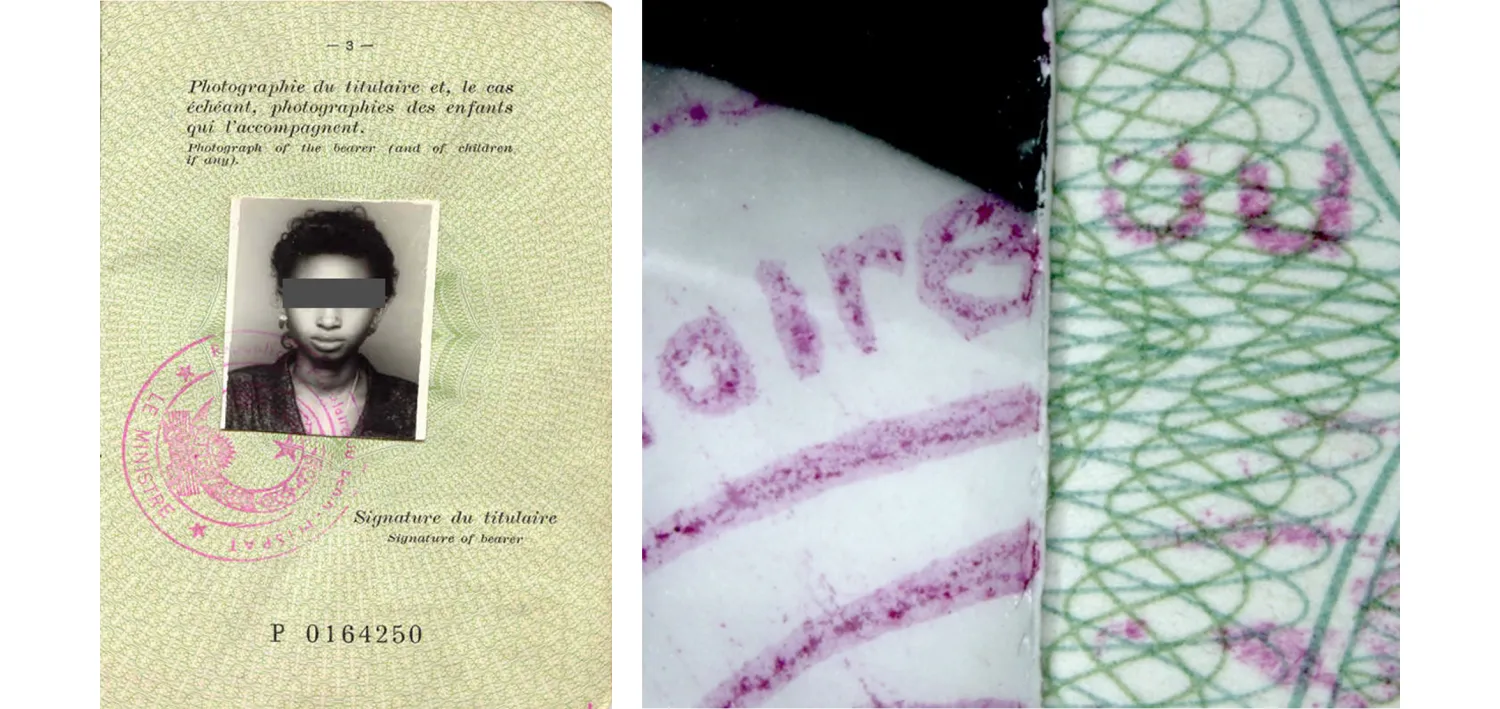
An old forged Benin passport. The original photo was substituted with another one. As a sign of forgery, you can see misaligned lines and characters of the stamp.
In other cases, the way the photo was attached to the page served as a security feature in itself. A great example of this is eyelets—small metal rings that were punched through both the photo and the document: they physically locked the photo in place, making it extremely difficult to remove or replace without leaving visible damage.
If someone did attempt to replace a photo secured with eyelets, it would almost always leave traces on the opposite page of the document.
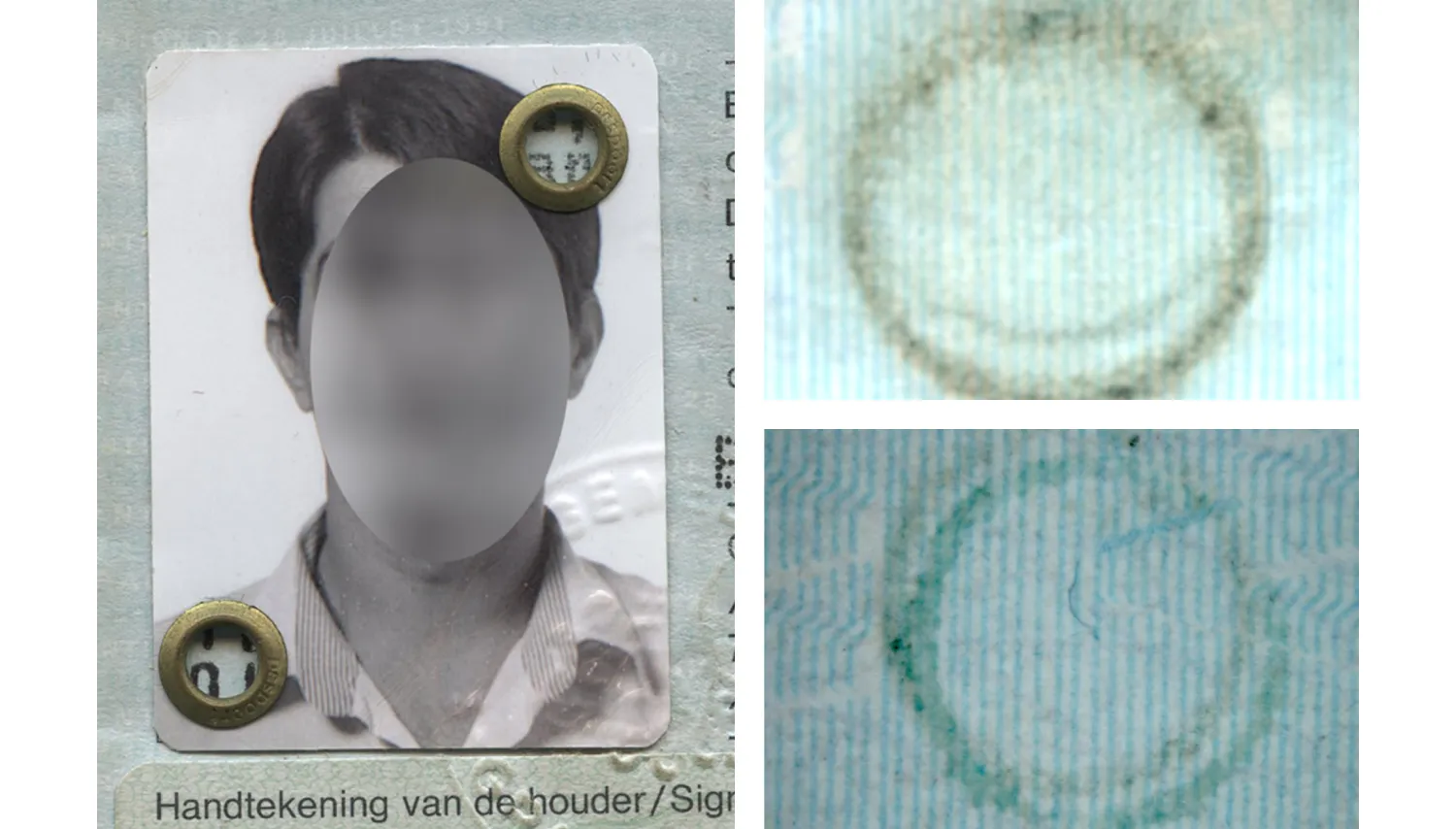
Example of an attachment of a photo with eyelets and possible traces of photo substitution on the opposite page.
Get posts like this in your inbox with the bi-weekly Regula Blog Digest!
How ID photos are secured nowadays
Today’s identity documents have evolved far beyond paper and glue. Most modern passports now feature a plastic insert as their data page, while modern national ID cards are made entirely of these durable materials.
In current ID documents, the holder’s photo is no longer a separate element—it’s integrated into the card using complex personalization techniques. These methods often combine several traditional approaches, such as laser engraving, inkjet printing, and other methods, all layered together to make photo substitution virtually impossible without leaving clear evidence of tampering.
Polycarbonate color personalization (PCP®)
One standout example of modern photo protection is the polycarbonate color personalization technique developed by the Polish Security Printing Works (PWPW). It uses a combined personalization method, where the holder’s color photo is applied using inkjet printing, while personal data—such as name and passport number—is laser-engraved into the polycarbonate inlay.
As a result, the photo is not just printed on the surface but physically sealed within the multi-layer polycarbonate structure. This makes the image tamper-proof and highly resistant to wear.

Driver's license of Poland. The holder’s portrait is applied with inkjet printing.
Innosec Fusion®
This method, produced by the Federal German Printing Office (Bundesdruckerei), also relies on a combined personalization technique, where the color photograph is applied using inkjet printing, and the personal data is laser-engraved into the polycarbonate layer.
Like the Polish method mentioned above, Innosec Fusion® ensures that the photo becomes an integral part of the polycarbonate inlay. This makes it extremely difficult to alter or substitute the photo without causing visible and irreversible damage.

Passport of Germany under infrared and white light. The holder’s portrait is applied with inkjet printing.
MB ALFRESCO®
MB ALFRESCO® by Mühlbauer (Germany) is another innovative solution that blends color picture personalization with laser engraving for enhanced document security. This hybrid technique splits the photo into two layers: the greyscale portion is laser-engraved deep into the inner layers of the polycarbonate, creating a durable, tamper-evident foundation. Meanwhile, the color layer—excluding black—is printed separately onto the card’s surface.

Due to the special characteristics of the ink, the colors penetrate the polycarbonate surface. This significantly reduces the risk of photo manipulation, as the image cannot simply be scratched off or removed without visibly damaging the document.

Passport of Montenegro. The holder’s portrait is applied with a combination of inkjet printing and laser engraving.
Mühlbauer’s latest development in the area of laser and color printing for ID documents is a sophisticated combination of an MB ALFRESCO® picture and a special varnish technology called Liquid Coating, which serves as an additional protective layer. It enhances resistance against counterfeiting and physical manipulation. The result is a highly secure, long-lasting holder’s portrait that’s incredibly difficult to alter or replace.
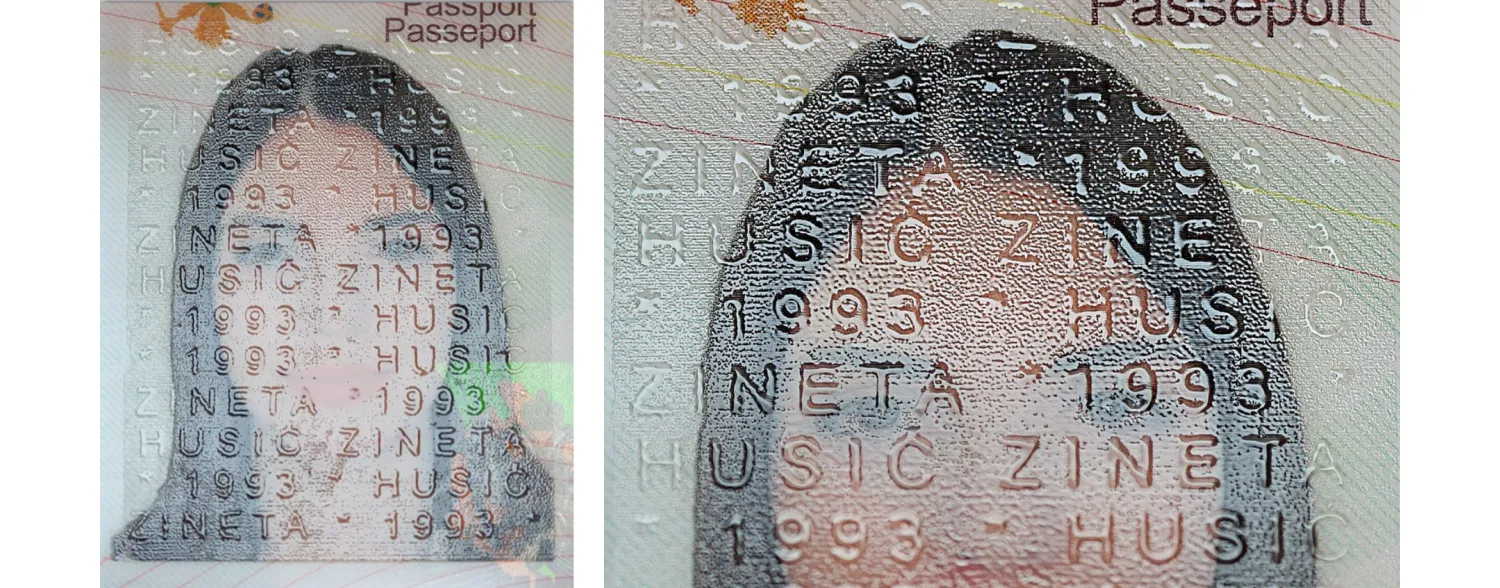
Liquid Coating under oblique white light in the passport of Montenegro. As an additional security feature, it repeats the passport holder’s name and date of birth.
LASINK™
LASINK™ by IDEMIA (France) is a cutting-edge personalization technology that brings color and laser engraving together. The system uses a pre-printed color matrix made of fine linear patterns, applied during the manufacturing of blank ID documents. This matrix is identical in every blank document.

The LASINK™ matrix consists of parallel lines of cyan, magenta, yellow, and white colors.
At the personalization stage, the holder’s photo is precisely laser-engraved into this color matrix. Thanks to a special algorithm, the grayscale laser engraving aligns with the colored lines to reveal a full-color image.

LASINK™ technology can be found in ID documents of Estonia, Greece, Latvia, Andorra, and others.
Gemalto Color Laser Shield
Gemalto Color Laser Shield by Thales (France) is a document personalization technology that combines precision laser technology with chemistry. The process relies on special pigments embedded in the inner structure of the document, which fade selectively when exposed to laser light at specific wavelengths and intensities.

The embedded pigments (initial colors) are bleached by four-colored lasers. Any color can be achieved by using a different intensity of laser beam. In total, they can be split into 256 levels of colors.

ID card of Cameroon. The holder’s portrait is applied using the Gemalto Color Laser Shield technique.
Multi-Layer Personalization (MLP)
EMPTECH’s (China) Multi-Layer Personalization, like other advanced solutions, combines laser engraving with color picture personalization to create a tamper-resistant portrait of the document holder.
With this method, the greyscale portrait is deeply laser-engraved into the inner polycarbonate layers, while the color parts (including black) are applied to the surface using UV inkjet printing. This dual process ensures both durability and high visual quality. To further protect the image, an epoxy overlay is applied over the photo area. This additional layer acts as a physical shield, helping prevent surface-level damage, scratches, or fraudulent tampering.

Diplomatic passport of China. The portrait is applied with Multi-Layer Personalization technology. The epoxy overlay covers not the whole portrait area. It is visualized in oblique white light.
CLIP ID® (Color Laser Image Protected ID)
CLIP ID® (Color Laser Image Protected ID) by Veridos (Germany) combines laser engraving with color printing, embedded within a lenticular structure. With this personalization technique, a black-and-white version of the holder’s photo is laser-engraved into the document, while a full-color image is inkjet-printed directly on top.

Demo ID by Veridos that showcases the principle of CLIP ID® technology
CLIP ID ECHO®
CLIP ID ECHO® is an enhanced version of the original CLIP ID® technology. Developed using lenticular technology, it displays a repeated portrait and biographical data that only becomes visible when viewed from specific angles. The hidden information is personalized through laser engraving.

Passport of Latvia. The portrait is applied with CLIP ID ECHO® technology.
Examples of ID photo substitution from the field
All of the examples above highlight how modern identity documents use a combination of advanced photo personalization techniques. Plus, these images are further secured with UV printing, holograms, optically variable elements, and durable laminates, creating multiple layers of protection.
Yet, despite these advancements, the concept of simply replacing the photo in a genuine passport book or ID card remains highly attractive to fraudsters. If successful, this method gives the attacker access to a fully authentic document—with valid security features and genuine machine-readable zones—except now it reflects a different identity.
Let's look at a few real-life examples.
Disclaimer! Before showing further examples, we want to highlight that any attempt to replace or manipulate the photograph in an ID document is not only illegal, but also technically bound to fail.
Case 1. Data page peeling
Data page peeling involves lifting, separating, or delaminating the top layer of the data page in order to replace key information, like the photo and personal information. It typically includes heating or the use of chemicals to weaken the adhesive between layers. Then the protective laminate is peeled off, and the biographical information is changed. The original laminate is reapplied to make the page look untouched.
For instance, this 2003 series Lithuanian passport, which contained a plastic data page, was forged using the peeling technique.

Specimen of the 2003 series Lithuanian passport (left) and the forged version (right). To the naked eye, there’s nothing wrong with the forged document under white light.
As the forged data page was based on an authentic passport, it even kept the “true” fluorescence under ultraviolet light.

Although we can observe the authentic ultraviolet pattern on the forged passport, there is also fluorescence on the whole page, which is a sign of forgery. This happens if the original layer is not replaced with security paper, or, as in this case, because of re-gluing.
The evident mismatches are seen under infrared light. The photo in the specimen contains halftones—it contains more information in comparison to the forged one, which is a plain two-tone image.

Under infrared light, there are discrepancies between the specimen and the forged passport.
Why does this happen? The answer is rather simple: the forged portrait was printed with an inkjet printer, which has other features and reacts differently under IR light. Let’s zoom in.

The obvious difference between laser engraving (left) and inkjet printing (right) under 40x magnification. Inkjet printing can be distinguished by its color dots. Images were captured with the Regula 4308 video spectral comparator.
Another sign of forgery is illegible microtext, which should repeat the passport holder’s name. An inkjet printer is not capable of printing microtext.
.webp)
The microtext imitated with an inkjet printer (right) under 40x magnification. Also, the forged microtext is slightly displaced relative to the authentic microtext (left).
Case 2. Morphing
Face morphing is an advanced type of ID fraud where the original photo in a document is altered by overprinting the facial features of an impostor. The result is a hybrid portrait that visually resembles both individuals, enabling the impostor to bypass border checks or identity verification.
Let’s look at a hypothetical scenario: imagine that a genuine passport is stolen, lost, or obtained through an illegal deal. Instead of replacing the photo entirely, the impostor overprints his own facial features onto the original portrait.
The result? The passport remains authentic but now displays a face that closely matches the impostor. This gives the fraudster a chance of successfully crossing borders or accessing secure environments using someone else’s identity.
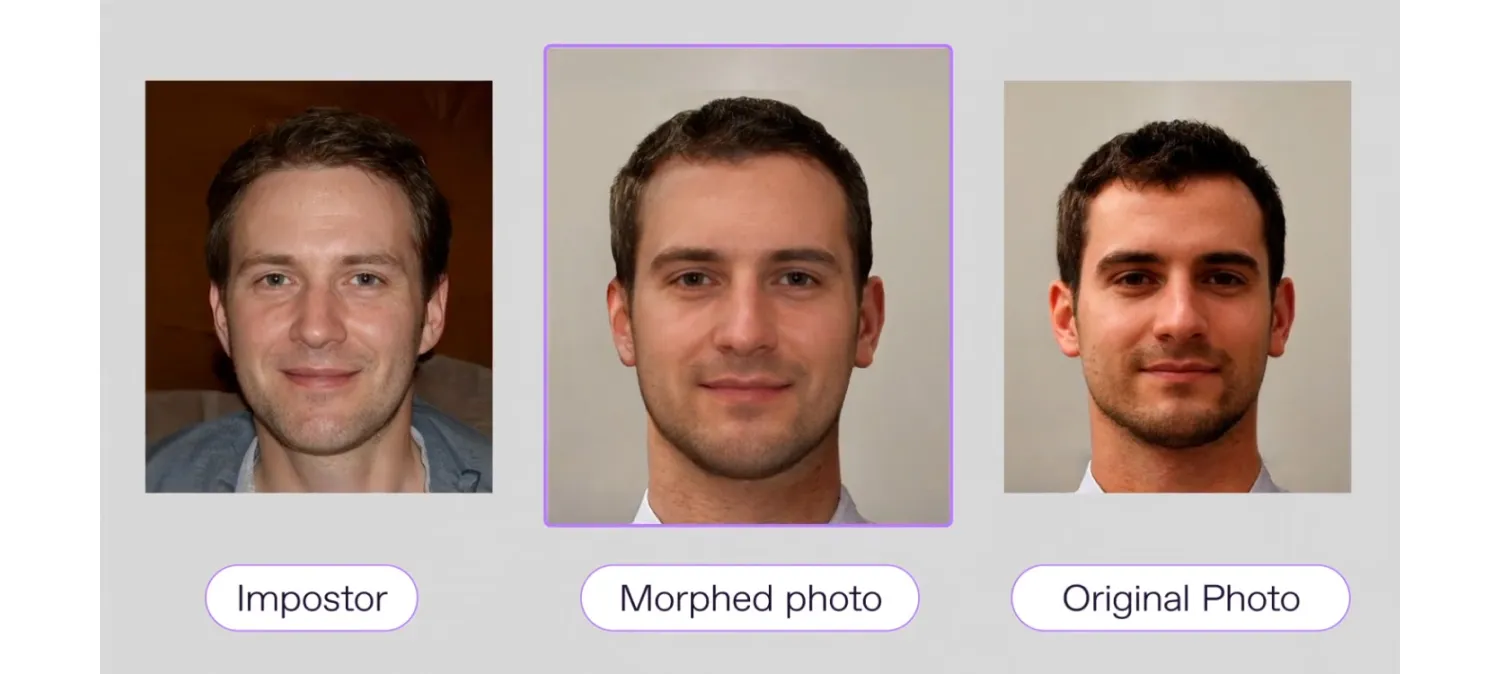
Example of how the original face can be blended with the facial features of the impostor to make the forged portrait resemble the impostor.
If you are interested in learning more about real cases of morphing in ID documents, don’t hesitate to check out Let’s Face the Truth: The Photo Is the Most Sensitive Part of Document Security
How Regula solutions help to identify ID photo substitution
To address this challenge effectively, three key capabilities stand out:
Precision inspection with advanced hardware
Verification through reference databases
Expert knowledge through specialized training
Detecting photo substitution starts with a thorough examination of a physical document. In many cases, such as with the Lithuanian passport, forgery can be exposed under high magnification and varied light sources. Video spectral comparators offer very high optical magnification and a range of specialized forensic light sources, including white, UV, IR, oblique (white and IR), etc. They easily help identify printing techniques, as well as reveal microscopic signs of alteration, like peeled laminates, surface inconsistencies, reprinted areas, or damage to holograms.
However, before capturing such evidence, suspected documents should be compared with a reference (a passport specimen) to determine whether they are genuine or not, as well as to reveal the specific methods of personalization.
The problem is, no forensic expert in the world has all current and outdated ID specimens at hand.
Fortunately, Regula’s Information and Reference Systems (IRS) serve this exact purpose. These digital databases provide access to over 3,200 passport and ID reference documents, covering both current and obsolete documents from around the world.
Each document includes full-page images under multiple light sources, as well as detailed close-ups of personalization methods and embedded security features. This makes it possible to pinpoint discrepancies and authenticate documents with a forensic level of confidence. IRS solutions can be accessed as standalone software or integrated into most Regula devices for seamless operation.

The Video Spectral Comparator Regula 4308 integrates seamlessly with the Information Reference Systems (IRS), making it easy to access document specimens during manual document checks.
When it comes to morphing forgery, fraudsters commonly use UV inkjet printers, which employ inks based on substances that polymerize under ultraviolet light. Once exposed to UV radiation, these inks undergo an irreversible hardening process, creating images that are highly resistant to physical removal. This method of forgery provides a good-looking picture, which has almost no weak spots.
But even advanced forgery leaves traces. These overprints can often be detected by examining the surface of the laminate or polycarbonate layer with a morphing detector. Under magnification, you may observe tiny ink droplets—distinct, raised patterns on the surface that are not part of the original personalization.
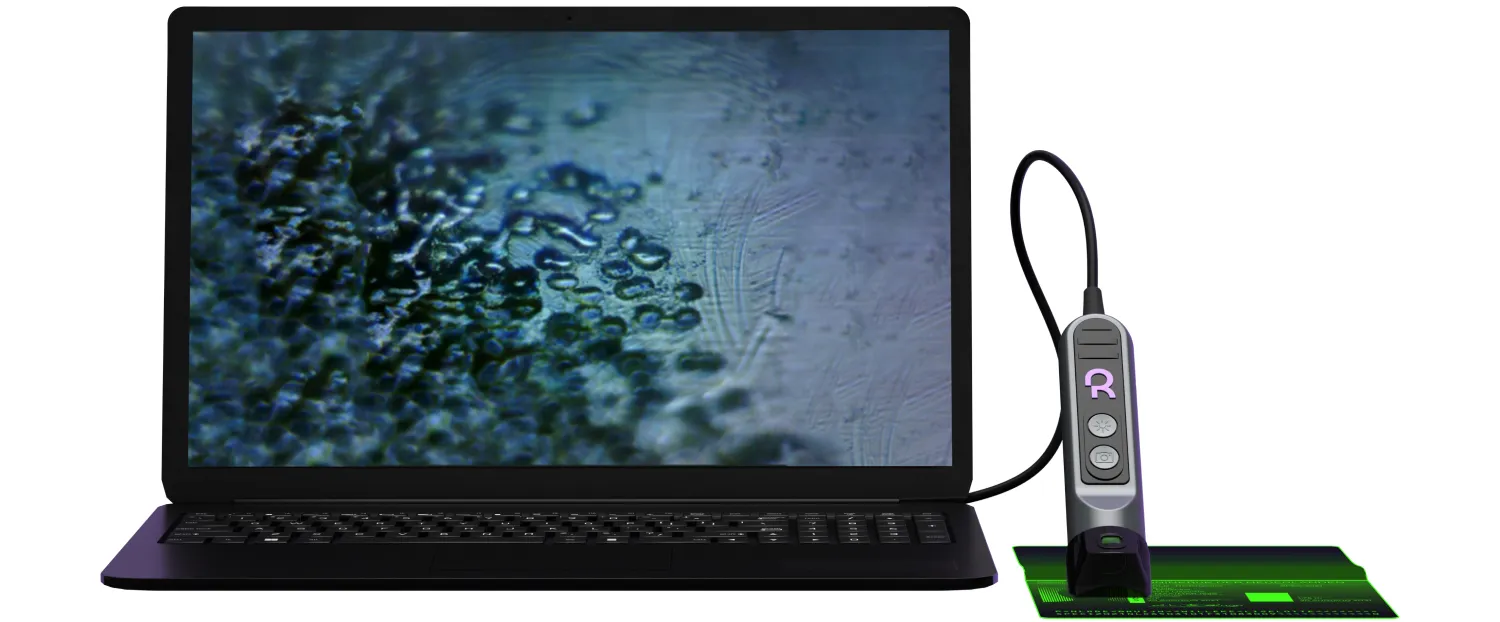
The Morphing Detector Regula 4166 is fully compatible with other Regula forensic devices, like comparators and microscopes. But this device can also be used independently by plugging
it directly into a PC.
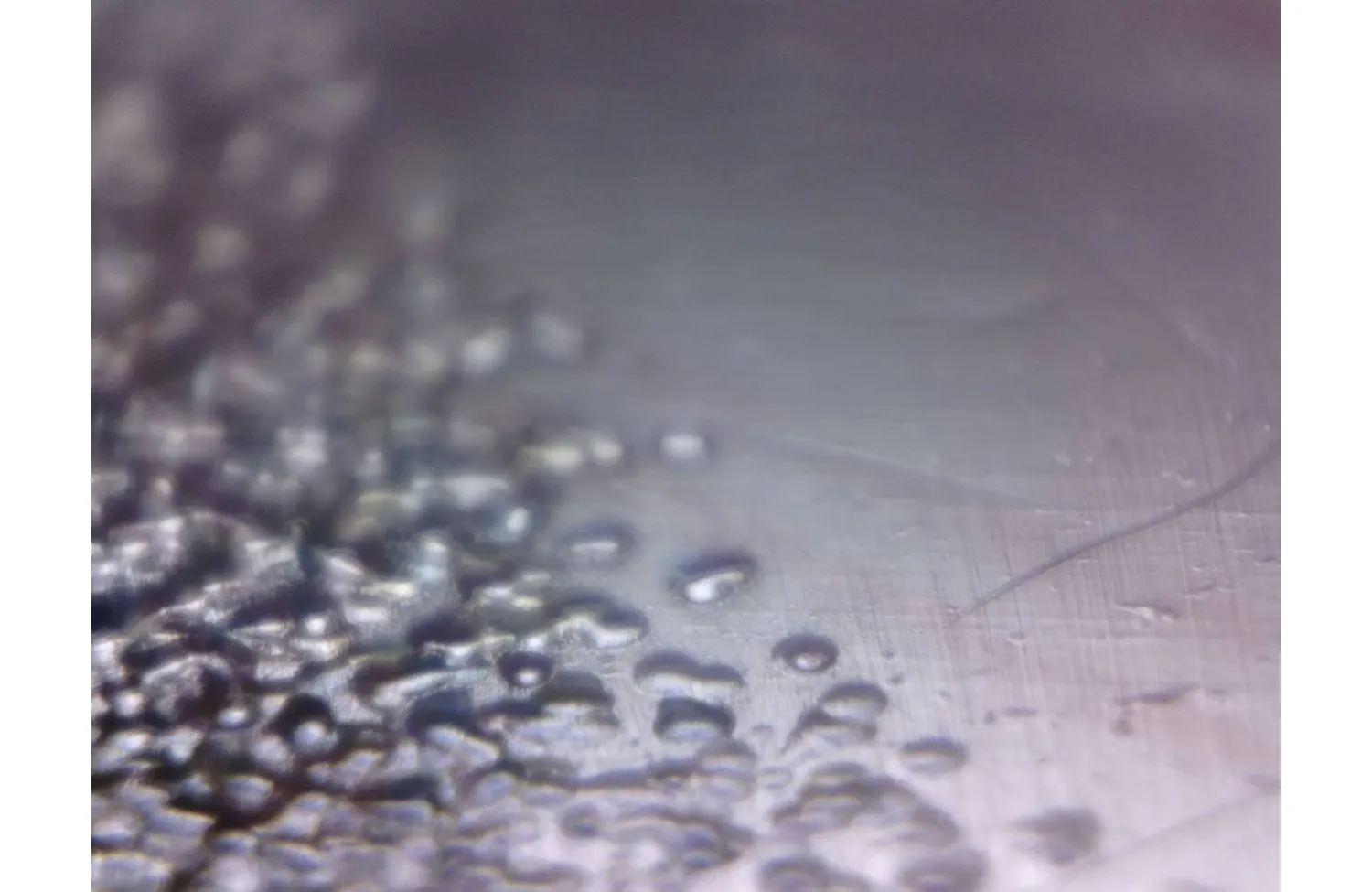
These droplets are signs of unauthorized image layering and can help experts differentiate between genuine laser-engraved portraits and morphing overlays. This photo was obtained with the use
of the Morphing Detector Regula 4166.
Still, one way or another, identifying photo substitution also relies on human expertise. Forensic document examination is a specialized skill that requires an understanding of printing technologies, document construction, and security features.
Through structured training programs conducted by Regula’s forensic experts, any person dedicated to the field of document authenticity verification can learn how to recognize signs of forgery, interpret inspection results accurately, and apply a systematic approach to physical document authenticity verification.
Conclusion
Even though modern ID documents are protected by a layered combination of security features and personalization techniques that make forgery nearly impossible, it’s essential to have an effective authenticity verification strategy.
Regula is here to equip your team with the tools and knowledge they need to stay ahead of evolving threats.
Don’t hesitate to contact one of our representatives to explore forensic solutions tailored to your needs. Request a personalized presentation today!




.webp)
